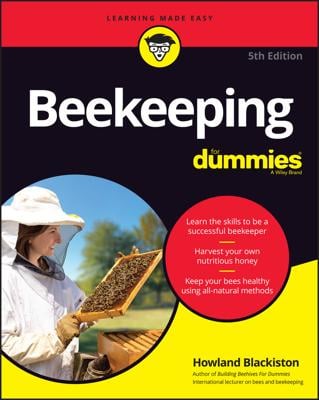Spring is one of the busiest times of year for bees (and beekeepers). It’s the season when new colonies are started, and established colonies come back to life.
As days get longer and milder, the established hive comes alive, exploding in population. The queen steadily lays more and more eggs, ultimately reaching her greatest rate of egg laying. The drones begin reappearing, and hive activity starts hopping. The nectar and pollen begin coming into the hive thick and fast.
Your spring beekeeping to-do list
Beekeepers face many chores in the springtime, evaluating the status of their colonies and helping their bees get into shape for summer months. Some of those chores include
Conducting an early bird inspection: Colonies should be given a quick inspection as early in the spring as possible. The exact timing depends upon your location (earlier in warmer zones, later in colder zones).
If the weather is cold enough that you need a heavy overcoat, it’s too cold to inspect the bees.
Determining whether your bees made it through the winter: Do you see the cluster? The clustered bees should be fairly high in the upper deep hive body. If you don’t see them, can you hear the cluster? Tapping the side of the hive and putting your ear against it, listen for a hum or buzzing.
Checking to make sure that you have a queen: Look down between some of the frames. (Do you see any brood?) That’s a good sign that the queen is present. To get a better look, you may need to carefully remove a frame from the center of the top deep.
Checking to ensure the bees still have food: Looking down between the frames, see if you spot any honey. Honey is capped with white cappings (tan cappings are the brood). If you see honey, that’s great. If not, you must begin emergency feeding your bees.
Medicating and feeding the colony: A few weeks before the first blossoms appear, you need to begin medicating and feeding your bees (regardless of whether they still have honey).
Reversing your hive bodies.
Anticipating colony growth: Don’t wait until your hive is “boiling” with bees. Later in the spring, before the colony becomes too crowded, create more room for the bees by adding a queen excluder and honey supers. Be sure that you remove the feeder and discontinue all medication at this time.
Watching out for indications of swarming: Inspect the hive periodically and look for swarm cells.
Your springtime commitment for your hive
Spring is just about the busiest time for the beekeeper. You can anticipate spending eight to 12 hours tending to your bees.
Administering spring medication
Although you probably don’t need to medicate your bees during their first season (reputable bee suppliers should have already medicated the bees), you’ll definitely want to consider medication in the spring of your colony’s second season. Remember to stop all medication treatments five to six weeks before adding honey supers to the colony to prevent contamination of the honey that you want to harvest.

